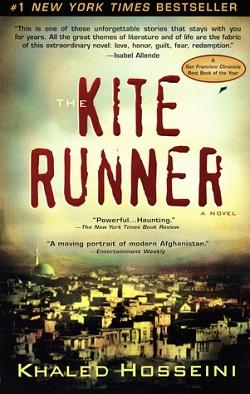I flashed back to the skyline I’d seen as we approached Avignon from across the Rhône. “Okay,” I conceded, “maybe you have a point.”
“Oh, hell, don’t encourage him, Dr. B,” Miranda squawked. “He’ll pontificate all day. Pun intended.”
Ignoring her protest, Stefan resumed. “Go; sell everything you have, and give the money to the poor — that’s what Jesus said. The popes said, ‘Give the money to us.’”
“I take it you don’t approve,” I said drily.
He shrugged and smiled cynically. “Au contraire, mon ami. I approve completely. And gratefully.” He swept his arm in a wide, encompassing arc. “I owe my career to the popes. They and their faithful flocks — pious, hardworking sheep — created the world’s greatest art and architecture. I would be foolish and ungrateful if I did not approve.”
Miranda was right; once he got wound up, it was tough to wind him down, and I was fast approaching my limit. “I’m thinking you didn’t bring me here just to talk about the glory and the greed of the medieval popes,” I said. “So cut to the chase. What the hell is going on here? And why all the cloak-and-dagger stuff?”
“Come,” he said, and walked toward the center of the treasure chamber. As I followed him into the darkness, my eyes gradually adjusted, and I saw that a makeshift screen had been rigged between two of the pillars by hanging a blue plastic tarp, a jarring contrast with the ancient stonework. Stefan held one end of the curtain aside for me, and I stepped behind it into the blackness.
Stefan flipped another switch on an electrical cord, and a pair of halogen work lights flashed on. My eyes squinted shut against the blinding glare; when they opened, I saw that part of the room’s back wall had collapsed — a roughly semicircular section, head high and an arm span wide. The stones had been stacked in the corner of the room, the rubble excavated, and the opening shored up with rough timber framing. “I thought you were an archaeologist,” I quipped. “This looks like a job for a stonemason.”
Stefan pointed to the right. Along the side wall was a long table covered by a white sheet. On the white sheet was a complete human skeleton, laid out in anatomical order.
The bones looked old; their color was a cross between gray putty and red-orange caramel, with darker, greasy stains here and there. Wordlessly Stefan offered me a pair of latex gloves. I put them on and picked up the skull, my favorite place to start.
The bones were definitely a man’s — the strong brow ridge above the eyes told me that, as did the big bump at the base of the skull, the external occipital protuberance: small and subtle in women, prominent in men. The nasal opening was broad, but the face itself was comparatively narrow, framed by prominent zygomatics — cheekbones — that gave it an angular, aristocratic appearance.
Cradling the skull upside down in my left palm, I studied the upper teeth and the roof of the mouth. Two molars and a canine tooth were missing, and several others had cavities. The presence of all four wisdom teeth, plus the complete fusion of the sutures — the seams — in the upper palate, confirmed that the man was an adult. Turning the skull right side up, I examined the cranial sutures, the zigzag joints in the top of the skull. In young adults, the sutures are dark and prominent, almost like irregular zipper teeth. This man’s, by contrast, were smooth and fading, almost obliterated. Although cranial sutures can give only a rough indication of age, the smoothness of these suggested that this man was my age, mid-fifties, or older — maybe a decade or more older. The spine seemed to bear this out, too; the vertebrae were beginning to develop the ragged bony fringe known as osteoarthritic lipping, which is one of the skeletal signs of aging. This man’s spine, I realized with an unexpected, ironic smile, probably looked a lot like my own.
It was when I looked at the ribs that I felt a familiar spike of adrenaline, the rush that always came when I got hooked on a forensic case. On the right side of the rib cage, everything was normal, but on the left side, the eleventh and twelfth ribs — the lowermost, “floating” ribs, which attach to the spine but not to the sternum — looked slightly truncated. I picked them up and inspected their distal ends, which curve around the sides of the lower chest but don’t wrap all the way to the front. Normally they’re tipped with cartilage, though these were too old and clean for that. But when I compared them with the matching ribs from the right side, the difference between them was dramatic. The tips of the right ribs were smooth and rounded, but the ends of the left ribs were flat and jagged. The ends of these two ribs appeared to have been sheared off by a sharp blade.
I looked up at Miranda and Stefan. “Unless this guy fell on his own sword, I’d say he was stabbed to death.”
“But wait, there’s more,” Miranda said, eyes shining. “Look at the extremities.”
I scanned the right arm, the one closest to me. I noticed nothing amiss until I got to the distal end of the forearm. Near the wrist both bones, the radius and the ulna, were gouged on their medial surfaces, as if a knife had been forced between them. I felt a slight tingling, which intensified when I inspected the left forearm and found similar gouges there.
“Now the feet,” she said. I almost missed it: more gouge marks, these between the metatarsals, the bones at mid foot.
Wheels were turning in my mind, but they were turning slowly — bogged down partly by fatigue but also by disbelief at what I was seeing, or what it meant. “Okay, so what’s the story? Where’d this guy come from? And why all the secrecy about a skeleton that’s six or seven centuries old?”
She looked at Stefan. “Now?”
He nodded. “Oui. Now.”
Miranda stepped forward and lifted the flap of overhanging sheet from the front of the table. Tucked on the floor beneath was a box two feet long by a foot or so square. The box was stone, but it had roughly the same shape as thousands of corrugated cardboard boxes stashed beneath the football stadium in Knoxville — boxes I myself had carefully packed with the bones of the Anthropology Department’s skeletal collection. “A stone ossuary?” She nodded. “The bones were in this ossuary, sealed inside the wall?” She nodded again.
“The wall collapsed,” Stefan explained. “Vibrations from a jackhammer outside. When they saw something inside, that’s when they called me. And that’s when I called Miranda.”
“This was wrapped around the ossuary,” she added, lifting a tangle of crumbling cord from inside the ossuary. Near one end of the cord was an irregular disk of soft gray metal — lead — stamped with what appeared to be tiny likenesses of two men’s heads. I shot a questioning look at her.
Stefan answered. “Those figures are Saint Peter and Saint Paul. That’s a papal seal.”
“You’re saying those bones were put there by one of the popes?” He nodded. “Why would a pope seal up a skeleton and hide it in a wall?” I asked. “Was this a rival? Somebody he killed to get the papal crown?”
“Non. Not if the inscription is true.”
“Inscription?”
He pointed, and for the first time I noticed a flat, rectangular panel propped against one end of the ossuary. It was the lid, made of the same pale, soft stone as the box. Miranda hoisted it from the floor and laid it at one end of the table.
Two images were chiseled into the lid — images that sent chills up my middle-aged, incipiently arthritic spine. One was a lamb. The other was a cross.
Suddenly all the secrecy and skittishness made sense. This would be the find of the century — no, this would be the greatest archaeological find of all time — if these were indeed the bones of the Lamb of God, the crucified Christ.
“So,” he said, “perhaps you can understand why we didn’t want to tell you over the phone, or by e-mail. Too big. Too risky. And now that you know, you have a choice. Do you want to stay and help us study it, help us figure out if the inscription is true? Help us figure out if it’s Jesus?” Something about the way he put it—“help us”—hit a nerve. I wrote it off as jet lag, until he added, “You could be third author on our publications.” Third author? That was
a role to which only first-year graduate students aspired. And the phrase “our publications” implied a cozy possessiveness on Stefan’s part — not just of the bones, but also of Miranda — that I didn’t like. I opened my mouth to say no, but Miranda didn’t give me time.
“Come on, Dr. B,” she coaxed, “say yes. It’s the chance of a lifetime. And there’s nobody in the world who’s better qualified to examine these bones than you.” I hesitated, but then Miranda gave me a pleading smile and clasped her hands, beseeching, and my resistance crumbled. Oh, what the hell, why not? I thought. You’ve come all this way, and it’s an interesting question. What finally tipped the scales was another thought that hit me out of the blue. And maybe it’s not a bad idea to hang out here till Rocky Stone rounds up those drug runners.
“I’d have to be back in Tennessee in a week,” I said. “Two, at the most.” Miranda beamed and bowed gratefully; Stefan smiled thinly.
“No problem,” he said. “I’m sure Miranda and I can finish everything after you go home.”
Suddenly he froze, holding a finger to his lips for silence and laying his other hand on Miranda’s arm. He turned toward the staircase, listening intently, and I strained to hear what had alarmed him. At first I heard nothing, but then came the faint clatter of metal on metal: a padlock rattling as it was inspected and tugged? the upper gate shifting from an exploratory shove? At that moment the room went pitch-black. Miranda gasped, and Stefan gave a low sshh. In the darkness, I felt a hand — Miranda’s hand — clutch mine. Finally, after an intense, interminable silence, I heard the rhythmic thud of footsteps.















